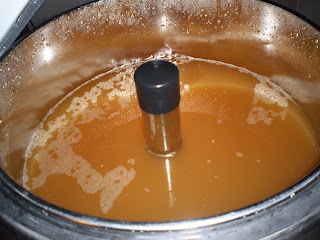Oaking on New Year's Eve

A little over a month into the secondary fermentation phase and the wine continues to dry down. The great reaction from last year's oaked Riesling bottles has encouraged me to add oak to two of the three carboys this year. I must say that I cannot even taste the oak from the chips, but I can recognize what seems to be an increased fullness in the wine. The faint bitterness from the oak perhaps adds an element that complements the sweetness and acidity of the wine and fills out the palate.













